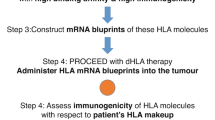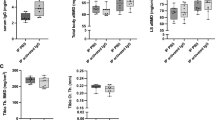Abstract
FOR use in humans the active components of anti-lymphocytic serum (ALS) must be sufficiently free of irrelevant substances, concentrated and non-toxic for it to be injected intravenously. With this in mind earlier investigations designed in the context of an experimental model1 were aimed at (1) preparing pure anti-lymphocytic antibody (ALSAb) from anti-lymphocytic globulin preparations (ALG) and (2) increasing the biological activity of such preparations by labelling the protein in them with a low energy gamma-emitting isotope (125I). It was hoped that the specifically localized irradiation would play a role in incapacitating the target lymphocytes1. ALS raised in rabbits is widely used, but many workers have reported considerable variation in the quality of ALS from individual rabbits. It would therefore be advantageous to raise ALS in larger animals such as cattle or pigs so that larger pools of material could be obtained. The earlier experiments with ALSAb prepared from rabbit ALS have been extended in the experiments described here, in which the effectiveness of purified bovine anti-mouse lymphocyte antibody (BALSAb) and 125I-BALSAb has been measured. A preliminary investigation has also been made of the possibility of using a column of thymocytes bound to ‘Sepharose’, for the preparation of BALSAb.
This is a preview of subscription content, access via your institution
Access options
Subscribe to this journal
Receive 51 print issues and online access
$199.00 per year
only $3.90 per issue
Buy this article
- Purchase on Springer Link
- Instant access to full article PDF
Prices may be subject to local taxes which are calculated during checkout
Similar content being viewed by others
References
Anderson, H. R., and Dresser, D. W., Europ. J. Immunol., 1, (1970).
Binns, R. M., Simpson, E., Nehlsen, S. L., and Ruszkiewicz, M., Transpl. Proc. (in the press).
Jooste, S. V., Lance, E. M., Levey, R. H., Medawar, P. B., Ruszkiewicz, M., Sharman, R., and Taub, R. N., Immunology, 15, 697 (1968).
Lance, E. M., Ford, P. J., and Ruszkiewicz, M., Immunology, 15, 571 (1968).
Greenwood, F. C., Hunter, W. M., and Glover, J. S., Biochem. J., 89, 114 (1963).
Porath, J., Axen, R., and Erback, S., Nature, 215, 1491 (1967).
Schechter, B., Schechter, I., and Sela, M., Immunochemistry, 7, 587 (1970).
Bachvaroff, R., Galdiero, F., and Grabar, P., J. Immunol., 103, 953 (1969).
Woodruff, M. F. A., Nature, 217, 821 (1968).
Lance, E. M., J. Exp. Med., 130, 49 (1969).
Anderson, N. F., James, K., and Woodruff, M. F. A., Nature, 218, 771 (1968).
Author information
Authors and Affiliations
Rights and permissions
About this article
Cite this article
DRESSER, D. Preparation of Highly Radioactive Bovine Anti-mouse Lymphocyte Antibody. Nature 229, 630–632 (1971). https://doi.org/10.1038/229630a0
Received:
Issue Date:
DOI: https://doi.org/10.1038/229630a0
Comments
By submitting a comment you agree to abide by our Terms and Community Guidelines. If you find something abusive or that does not comply with our terms or guidelines please flag it as inappropriate.



